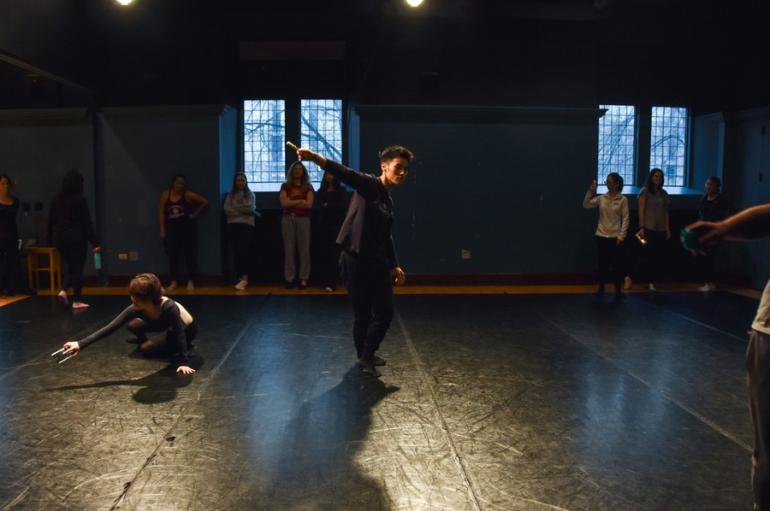
UChicago’s Dance Program: Critique, Creativity, and Culture
In Contemporary Dance Practices, a recent addition to the Core Curriculum, students take time between discussions of differing aesthetic theories, the influence of pop culture, and the privileging of Western perspectives in dance criticism to engage in genuine movement practice, learning a wide variety of techniques and styles.
In another class, this one called Moving and Thinking / Thinking and Moving, students break down the divide between the intellectual and the physical using “embodied research methodologies.”
In Katherine Dunham: Politics in Motion, students trace the life and work of one of the first Black women to receive a degree from the College. Dunham made numerous contributions not just to dance but also to anthropology and political activism. Students think about dance as a work of social activism within the context of Dunham’s life while at the same time learning the movement technique she created that carries her name.
As a part of the Committee on Theater and Performance Studies (TAPS), the University of Chicago Dance Program allows students to take unorthodox and unique classes like these. Nearly every course has a physical component to match theoretical and academic work, mixing discussions on readings and videos with corresponding studio practice. In an interview with The Maroon, Julia Rhoads, who heads up the dance program within TAPS, said, “I think students are so drawn to the classes because they are about getting people to think in a different way through embodied research. It’s embodied practice. At the University of Chicago, intellectual processes are typically first and foremost, [so] to have the opportunity to engage with integrated modes of thinking and doing is exciting.”
In recent years, interest in dance has grown within the College community: student groups and dance RSOs have become increasingly popular, while in 2018, the dance program was officially created by the University. So far, the feedback from students has been overwhelmingly positive. “Students are so hungry for these new modalities. They really enjoy moving. They are really excited about the field and the practice,” said Rhoads.
The dance program courses attract students of all different backgrounds and experience levels. There are no prerequisites to any of the dance classes, and they are available to students of all majors. “They're very open level,” Rhoads said, “and the mix of movement backgrounds from the students brings a dynamism to each class.” First-time dancers practice alongside skilled veterans, and the theory and historical context provided by readings and videos serve as an ideal mediator between different skill levels.
The dance program currently offers two courses that satisfy core requirements—Contemporary Dance Practices and Moving and Thinking / Thinking and Moving—and six more courses as part of the TAPS major. But the program also offers many co-curricular classes, ranging from yoga to hip-hop fundamentals. These are open to all members of the University of Chicago community, and they tend to focus on practical work, teaching participants specific styles and forms.
All courses are currently remote due to COVID-19, but there have been some surprising benefits for both students and teachers. “We all miss being in real time, real space,” Rhoads said, “but there are things that I do wish to bring forward—making dance more accessible to people [who] can’t get to a studio or [who] feel safer practicing in their home environment. A huge thing was having international guest artists come, and you can’t [always do that].”
The co-curricular courses are taught by local artists impacted by the pandemic. Rhoads says that she was interested in supporting the community around the College, with all class payments going directly to the teachers. The dance program, since its inception, has tried to situate students within the broader context of Chicago and to help them connect to the city’s rich artistic tradition. COVID-19 thus offered a unique opportunity to expose students to new techniques and approaches to dance while at the same time giving back to local dancers.
By Wes Mahony
Article originally published by The Chicago Maroon
